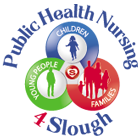ACTIVITIES TO DEVELOP EARLY CONCEPTS
Children will need to understand concept vocabulary before they are able to use it expressively (please see concept development in the understanding section).
COLOURS
To name up to four colours
Language: Red; yellow; blue; green; colour(s); Which one?
- Tie ribbons to coloured balloons (e.g. red ribbon to red balloon). Ask the child to choose one of the ribbons and pull out one balloon. Encourage the child to name the colour of the balloon they have chosen.
- Have a range of coloured transparent sheets/materials (cellophane, acetate, perspex). Give the child the opportunity to experiment with the materials, looking through the pieces and saying what colour they can see.
- Play games which include colours e.g. jigsaws and matching games. Encourage the child to name the colours as the game is played.
- Have a selection of red and blue bricks. Encourage the child to tell you the colours as they build a tower of bricks. Increase the amount of bricks and colours which are used once the child becomes familiar with the colour names.
- Share books which are on the subject of colours. Ask the child to name the coloured objects/characters in the book.
- Make a colour table or special box containing items of the same colour. Ask the child to find more items. Encourage the child to name the items as they find them.
TOP TIP: Begin by focusing on one or two colour names and then increase the number of colours.
SIZE
To describe objects as big or little
Language: Little; big; Which is..?
(Remember children may use ‘small’ instead of ‘little’)
- Have a very large teddy and a very small teddy so that the difference between the two is very clear. Hold the big teddy and say ‘I’ve got big teddy’. Point to the little teddy and say ‘There’s ……..’
- Ask the child to put the hat on the big (or little) teddy and encourage them to say the words as they do.
- Provide a selection of children and adult’s clothes. Play games where the child chooses a piece of clothing to put on e.g. a big hat, and say whether it is big or little.
- Play rolling, throwing and catching with big and little balls.
TOP TIPS: Start with big objects and give the child chance to begin to understand the concept of ‘big.’ Then introduce small items.
Make sure that the small objects are very small and the big objects are very
big, so that it is easy to see and understand the difference.
Use gesture and a ‘big’ or ‘little’ voice to emphasise your meaning.
LENGTH
To describe objects as long or short
Language: Long; short; Which?
- Roll play-dough sausages and ask the child to say whether it is long or short.
- Have a variety of ribbons or strips of fabric to play with during outdoor play, some very short and the others very long. Let the child explore the ribbons and use the words ‘long’ and ‘short’ to describe them.
- Use tights/socks to make snakes. Encourage the child to talk about the lengths of the snakes.
TOP TIPS: Make sure the objects are very short or very long!
When you say the word ‘long’ extend it e.g. ‘L—o—n—g’. Say the word quickly to indicate ‘short’.
POSITION
To use language to describe position
Language: In; On; Under
- Read ‘The Three Billy Goats Gruff.’ Ask the children to re-enact the story using puppets and props and describe the positions of the characters throughout the story e.g. ‘The troll is under the bridge’.
- Use obstacle courses/climbing frames and ask the child to hide around the equipment. Ask ‘Where are you?’ Encourage the child to answer e.g. ‘I’m in the tunnel.’
- Using the sand tray hide one of the familiar toys e.g. a dinosaur. Say ‘Where is the dinosaur?’ Encourage the child to describe the position of the dinosaur e.g. ‘he’s under the bucket.’

